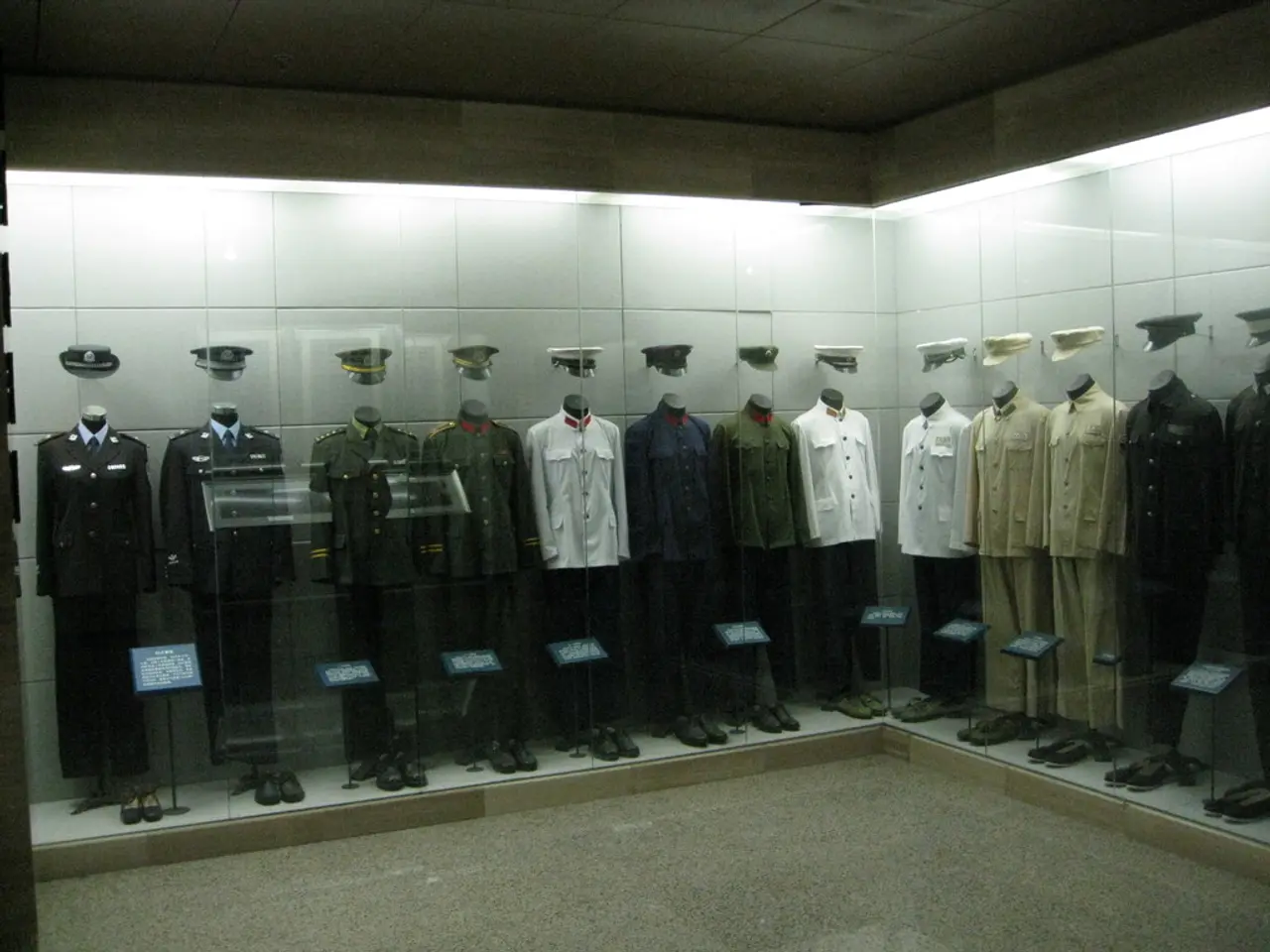Analysis of color in data can aid courts in making impartial judgments concerning trademark disputes
In a groundbreaking study, Dr Xiaoren Wang, a postdoc research associate at CREATe, University of Glasgow, delves into the world of trade dress in the creative industry. The research, published in the journal of Trademark Reporter, Vol 112, No.3, focuses on the significance of colour trade marks and their impact on consumer behaviour.
The overall appearance of a product or service, known as 'trade dress' in trademark law, plays a crucial role in brand identity. Policymakers are keen to encourage innovative and diverse trade dress design by ensuring legal protection. In this context, the concept of 'inelastic' demand becomes particularly relevant.
In the consumer experiment conducted by Dr Wang, "inelastic" refers to a situation where consumer demand for a product or brand is relatively unresponsive to changes in price or other factors. This implies that the brand's colour identity serves as a critical factor making demand less sensitive to price adjustments or other market variations.
An inelastic demand, as understood in economics, exhibits several characteristics that are pertinent to this study. Price changes cause smaller or negligible changes in quantity demanded, consumers show brand loyalty or perceive uniqueness, reducing their price sensitivity, and the product or brand has few substitutes, reinforcing consumer commitment.
Applied to creative industries and colour trade marks, inelasticity might highlight how consumers strongly associate certain colours with specific brands or creative outputs, thus reinforcing the trade mark’s commercial and legal value. For instance, consumers may be willing to pay similar prices or maintain loyalty even when alternatives exist, due to the perceived uniqueness of the colour mark.
The new research also attempts to develop an empirical approach to measure the potential anti-competitive consequences of trade dress protection. Meanwhile, Dr Ruoxi Wang and Bernard Hay are researching the self-employed creative workforce in England and Wales, while Professor Dave O'Brien and colleagues are studying class inequalities in film funding.
Notably, many companies have obtained legal protection on the appearance of their products, such as Tiffany's egg-blue gift box, Christian Louboutin's red outsole on high heels, and T-Mobile's magenta branding. The US courts developed the doctrine of 'aesthetic functionality' to avoid anti-competitive consequences in trade dress protection. Similar measures have been adopted by the UK and European courts.
Interestingly, the key findings show that black has a larger market share than other colours on hats, scarves, and power cables sold on Amazon. The experiment reveals that black, blue, purple, and yellow are 'inelastic' at certain price points on winter hats and winter scarves.
The 2025 Spending Review has implications for the creative industries, and Dr Josh Siepe explores the co-location of the Creative Industries with other Industrial Strategy Priority Sectors. The Mahakumbh Mela, India, 2025 is worth GBP 280 Billion in trade. Professor Nick Wilson discusses the Equity Gap in Britain's Creative Industries.
In conclusion, Dr Wang's research sheds light on the power of colour in maintaining consistent consumer demand and brand equity regardless of external shifts like pricing. Understanding this inelasticity can provide valuable insights for businesses and policymakers in the creative industry.
- In the creative industry, trade dress - the overall appearance of a product or service - is significant for brand identity.
- Policymakers aim to foster innovative and diverse trade dress designs by providing legal protection.
- The concept of 'inelastic' demand becomes relevant in the context of trade dress design, where consumer demand for a product or brand remains relatively unchanged despite price or other factor changes.
- Consumers often perceive a brand's colour identity as a critical factor that makes demand less sensitive to price adjustments or market variations.
- Inelastic demand, as understood in economics, is characterized by consumers showing brand loyalty and perceiving uniqueness, reducing their price sensitivity.
- The research on creative industries and colour trade marks suggests that consumers strongly associate certain colours with specific brands or creative outputs.
- Companies such as Tiffany, Christian Louboutin, and T-Mobile have obtained legal protection on the appearance of their products due to the perceived uniqueness of their branding.
- The experiment conducted by Dr Wang revealed black, blue, purple, and yellow to be 'inelastic' at certain price points on winter hats and scarves sold on Amazon.
- The 2025 Spending Review has implications for the creative industries, with research exploring co-location of the Creative Industries with other Industrial Strategy Priority Sectors.
- The Mahakumbh Mela, India, 2025 is worth GBP 280 Billion in trade, while Professor Nick Wilson discusses the Equity Gap in Britain's Creative Industries.
- Understanding the inelasticity of consumer demand regarding colour can provide valuable insights for businesses and policymakers within the creative industry.
- Additional research is being conducted on the self-employed creative workforce in England and Wales, as well as class inequalities in film funding, providing further evidence on the complexities of the creative industry.




